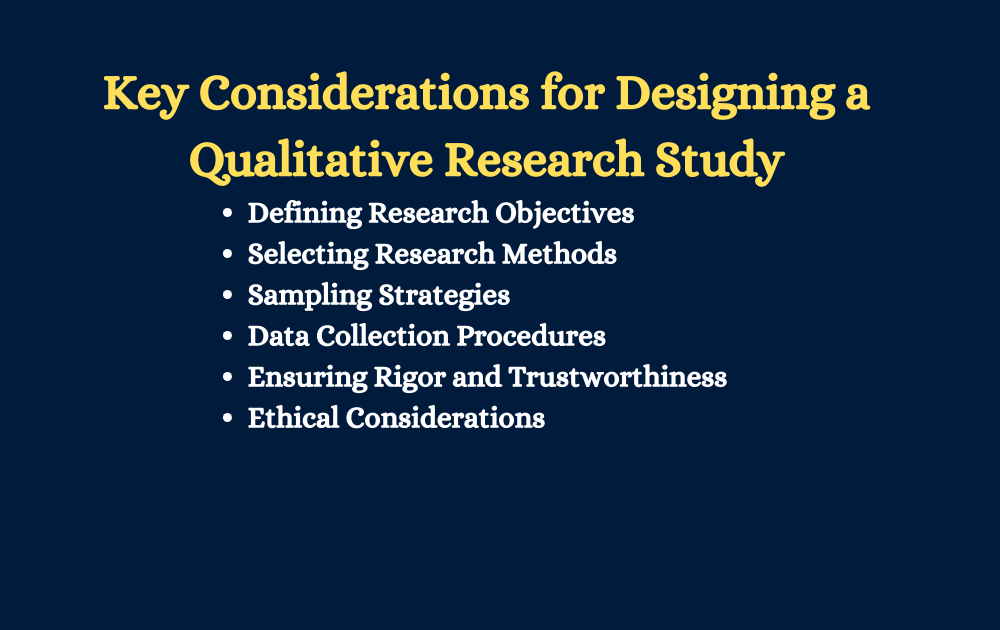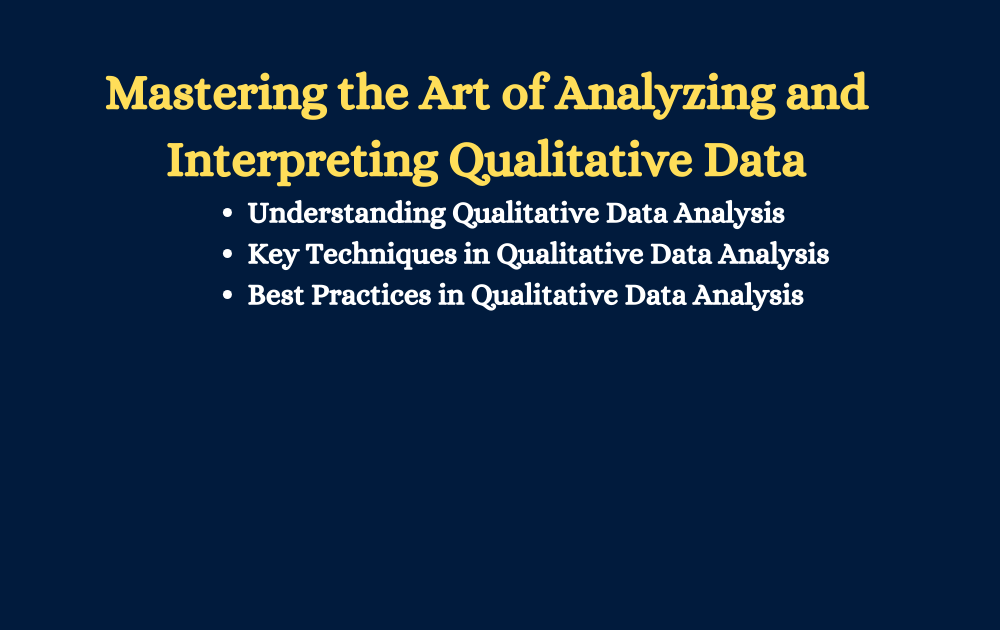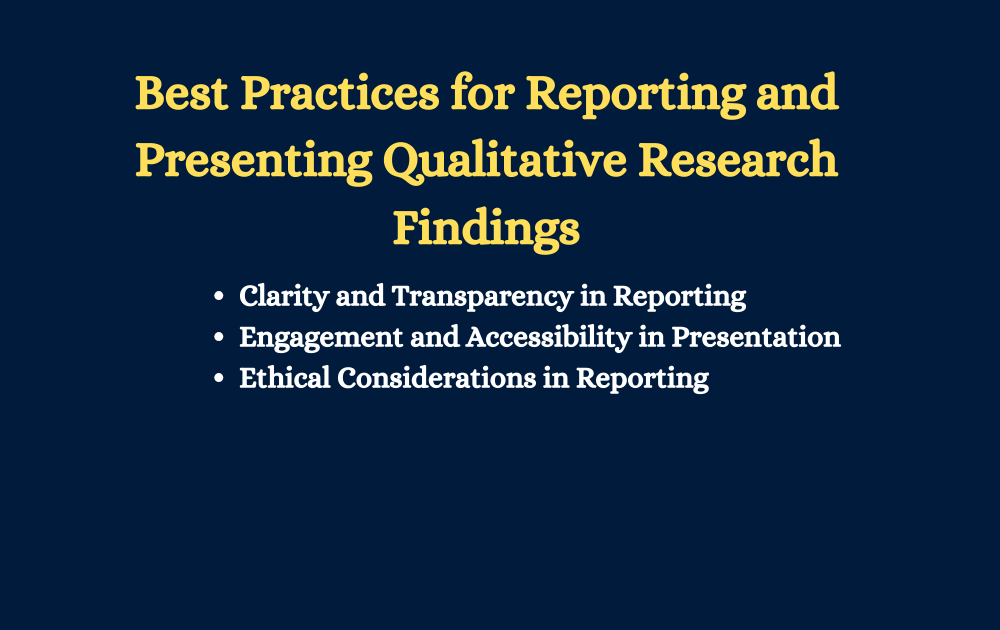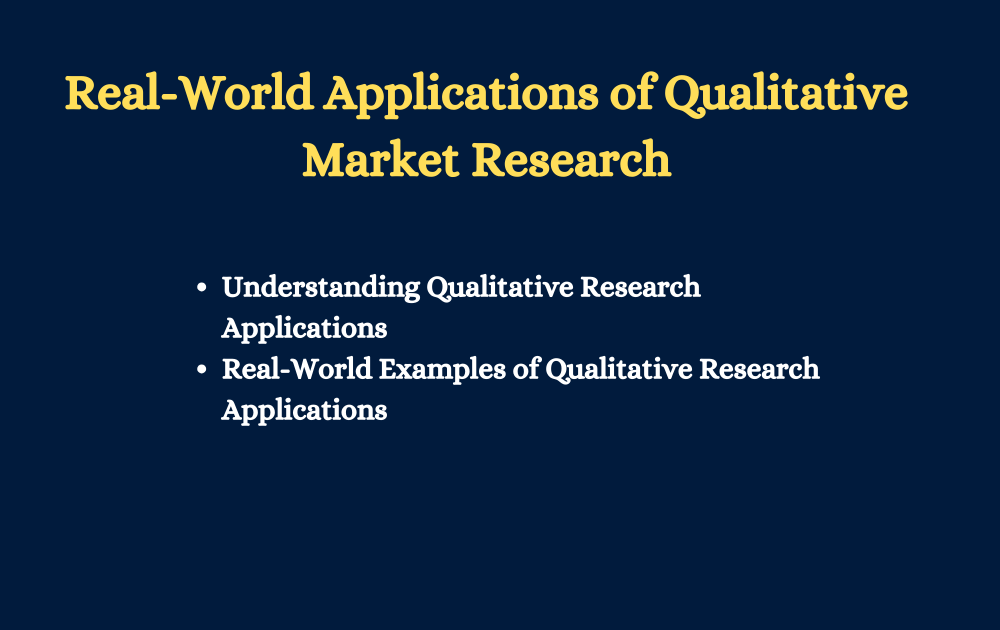In today’s dynamic business landscape, understanding consumer behavior and preferences is paramount for organizations striving to stay competitive. Qualitative market research serves as a cornerstone in this endeavor, offering a nuanced understanding of consumer motivations, perceptions, and desires. In this comprehensive guide, we embark on a journey through the realm of qualitative market research, exploring theoretical frameworks, diverse methods, effective strategies, and real-world applications. By delving into this multifaceted discipline, businesses can uncover valuable insights to inform strategic decisions, drive innovation, and enhance customer experiences.
Qualitative Market Research: A Comprehensive Overview
Understanding Qualitative Market Research

What is Qualitative Market Research?
Qualitative market research involves the systematic collection and analysis of non-numerical data, aimed at understanding the underlying motivations, attitudes, and behaviors of consumers. Unlike quantitative research, which focuses on numerical data and statistical analysis, qualitative research relies on qualitative data sources such as interviews, focus groups, observation, and ethnography to gain rich insights into consumer experiences and perspectives.
Significance of Qualitative Market Research:
Qualitative market research offers several key benefits for businesses:
- In-depth insights: Qualitative research methods allow researchers to delve deeply into the thoughts, feelings, and motivations driving consumer behavior, providing rich, nuanced insights that quantitative data alone cannot capture.
- Contextual understanding: By immersing themselves in the natural environments of consumers, qualitative researchers can uncover the contextual factors that influence consumer decision-making, such as cultural norms, social dynamics, and personal experiences.
- Hypothesis generation: Qualitative research can serve as a valuable tool for generating hypotheses and exploring new ideas, helping businesses identify emerging trends, market opportunities, and consumer needs.
- Informing strategic decision-making: The insights gleaned from qualitative research can inform strategic decision-making across various areas of business, including product development, marketing strategy, branding, and customer experience.
Key Methodologies in Qualitative Market Research:
Qualitative market research encompasses a variety of methodologies, each with its own strengths and limitations. Some of the key methodologies include:
- In-depth interviews: One-on-one interviews with participants, allowing researchers to explore topics in-depth and uncover individual perspectives and experiences.
- Focus groups: Group discussions with a small number of participants, facilitated by a moderator, to elicit group dynamics, consensus, and dissent on a particular topic.
- Observation: Systematic observation of consumer behavior in natural settings, providing insights into how consumers interact with products, services, and environments.
- Ethnography: Immersive fieldwork conducted over an extended period to gain a deep understanding of a particular culture or community and its relationship with products or services.
Applications of Qualitative Market Research:
Qualitative market research finds applications across various industries and business functions, including:
- Product development: Understanding consumer needs, preferences, and pain points to inform the development of new products or improvements to existing offerings.
- Branding and positioning: Uncovering brand perceptions, associations, and emotional connections to develop effective branding strategies that resonate with target audiences.
- Marketing strategy: Identifying target market segments, determining effective messaging and communication channels, and evaluating the effectiveness of marketing campaigns.
- Customer experience: Improving the customer journey by identifying points of friction, moments of delight, and opportunities for enhancing the overall experience.
Exploring Theoretical Frameworks in Qualitative Market Research

Understanding Qualitative Research Frameworks:
Qualitative research frameworks serve as conceptual frameworks or lenses through which researchers interpret and analyze qualitative data. These frameworks draw upon various disciplines, such as sociology, psychology, anthropology, and communication studies, to provide theoretical perspectives on human behavior and social phenomena. By grounding their research within a theoretical framework, researchers can contextualize their findings and generate deeper insights into consumer behavior.
Key Theoretical Frameworks in Qualitative Market Research:
- Grounded Theory: Grounded theory is an inductive approach to qualitative research that aims to develop theories or explanations grounded in empirical data. Researchers begin with an open mind and allow theories to emerge from the data through systematic coding, categorization, and comparison. Grounded theory is particularly useful for exploring complex social phenomena and generating hypotheses for further investigation.
- Phenomenology: Phenomenology seeks to understand the essence of human experience by exploring the subjective meanings and interpretations individuals attribute to their lived experiences. Phenomenological research aims to uncover the underlying structures and patterns of meaning inherent in human consciousness, shedding light on how individuals perceive and make sense of the world around them.
- Ethnography: Ethnography involves immersive fieldwork conducted within a specific cultural or social context to gain a deep understanding of the cultural norms, values, and practices of a particular group or community. Ethnographic research emphasizes participant observation, ethnographic interviews, and thick description to capture the nuances of social life and uncover the underlying cultural dynamics shaping behavior.
- Discourse Analysis: Discourse analysis examines the ways in which language is used to construct meaning, identity, and power within social interactions. Researchers analyze textual, verbal, or visual data to uncover underlying discursive structures, rhetorical strategies, and ideological assumptions that shape communication and social practices. Discourse analysis is particularly useful for examining how language shapes consumer perceptions, attitudes, and behaviors.
Applications of Theoretical Frameworks in Qualitative Market Research:
Theoretical frameworks play a crucial role in guiding the design, implementation, and interpretation of qualitative market research studies. Some of the key applications include:
- Guiding research design: Theoretical frameworks inform the selection of research methods, sampling strategies, and data collection techniques best suited to the research objectives and theoretical perspectives guiding the study.
- Providing analytical lenses: Theoretical frameworks provide researchers with conceptual tools for analyzing qualitative data, identifying patterns, themes, and underlying structures of meaning within the data.
- Informing interpretation and implications: Theoretical frameworks help researchers interpret their findings in light of existing theories and concepts, identifying implications for theory development, practice, and future research directions.
Exploring Methods and Techniques in Qualitative Market Research

Understanding Qualitative Research Techniques:
Qualitative research techniques encompass a broad spectrum of methodologies, each tailored to capture different aspects of consumer behavior and experiences. These techniques emphasize open-ended inquiry, participant engagement, and contextual understanding, allowing researchers to explore complex social phenomena and uncover rich, nuanced insights.
Key Methods and Techniques in Qualitative Market Research:
-
In-depth Interviews:
- Definition: In-depth interviews involve one-on-one conversations between a researcher and a participant, allowing for detailed exploration of topics and issues.
- Application: In-depth interviews are well-suited for exploring sensitive topics, eliciting personal narratives, and uncovering deep-seated motivations and beliefs.
- Advantages: Provides rich, detailed data; fosters rapport and trust between researcher and participant; flexibility in questioning and probing.
- Limitations: Time-consuming; may be subject to interviewer bias; limited generalizability due to small sample size.
-
Focus Groups:
- Definition: Focus groups are group discussions facilitated by a moderator, typically involving 6-10 participants, aimed at exploring shared experiences, opinions, and attitudes.
- Application: Focus groups are useful for exploring group dynamics, consensus, and dissent, generating diverse perspectives, and eliciting spontaneous interactions.
- Advantages: Allows for exploration of group dynamics and interactions; generates diverse perspectives and ideas; fosters synergy and creativity.
- Limitations: Potential for groupthink or dominant voices to influence discussion; may not capture individual perspectives; requires skilled moderation.
-
Observation:
- Definition: Observation involves systematic observation of consumer behavior in natural settings, such as retail environments, homes, or public spaces.
- Application: Observation allows researchers to study behavior as it occurs naturally, without the influence of self-report biases, and to capture non-verbal cues and contextual factors.
- Advantages: Provides firsthand insights into behavior; captures non-verbal cues and contextual factors; minimizes reliance on self-reporting.
- Limitations: Requires careful planning and ethical considerations; may be subject to observer bias; limited to observable behaviors.
-
Ethnography:
- Definition: Ethnography involves immersive fieldwork conducted over an extended period within a specific cultural or social context, aimed at understanding the cultural norms, values, and practices of a particular group or community.
- Application: Ethnography allows researchers to gain deep insights into the lived experiences of participants, uncovering cultural nuances, rituals, and social dynamics.
- Advantages: Provides rich, contextual understanding; captures everyday life as it unfolds; allows for participant observation and interaction.
- Limitations: Time-consuming and resource-intensive; may require prolonged engagement for rapport-building; potential for observer bias.
Key Considerations for Designing a Qualitative Research Study

Defining Research Objectives:
Before designing a qualitative research study, researchers must clearly define their research objectives and questions. Research objectives serve as guiding principles for the study, outlining the specific goals, outcomes, and areas of inquiry. By clearly articulating research objectives, researchers can ensure that their study addresses relevant research questions and generates actionable insights for decision-making.
Selecting Research Methods:
Qualitative research encompasses a variety of methods and techniques, each suited to different research objectives and contexts. When designing a qualitative research study, researchers must select appropriate methods for data collection, such as in-depth interviews, focus groups, observation, or ethnography. Considerations such as the nature of the research question, the target population, and the desired depth of insight should inform the selection of research methods.
Sampling Strategies:
Sampling is a critical aspect of qualitative research study design, influencing the representativeness and generalizability of findings. Qualitative researchers often use purposive sampling techniques to select participants who possess relevant characteristics or experiences related to the research objectives. Common sampling strategies include maximum variation sampling, snowball sampling, and theoretical sampling. Researchers must carefully consider the appropriateness of sampling techniques in relation to their research objectives and the nature of the study population.
Data Collection Procedures:
Once research methods and sampling strategies are determined, researchers must plan and implement data collection procedures. This involves developing interview guides, discussion protocols, or observation protocols tailored to the research objectives and methods chosen. Researchers should consider factors such as the length and structure of data collection sessions, the location and setting for data collection, and techniques for building rapport and trust with participants.
Ensuring Rigor and Trustworthiness:
Maintaining rigor and trustworthiness is essential in qualitative research to ensure the validity and reliability of findings. Researchers can enhance rigor through techniques such as member checking, peer debriefing, and triangulation of data sources. Additionally, researchers should document their research process transparently, including details of data collection, analysis, and interpretation, to enable others to assess the credibility and trustworthiness of findings.
Ethical Considerations:
Ethical considerations are paramount in qualitative research, particularly concerning participant rights, confidentiality, and informed consent. Researchers must obtain ethical approval from relevant institutional review boards and adhere to ethical guidelines throughout the research process. This includes obtaining informed consent from participants, ensuring confidentiality and anonymity, and minimizing harm or discomfort to participants.
Effective Strategies for Data Collection in Qualitative Research

Selecting Data Collection Methods:
Qualitative research employs a variety of data collection methods, each suited to different research objectives and contexts. Some common methods include:
- In-depth Interviews: One-on-one conversations between a researcher and a participant, allowing for detailed exploration of topics and issues.
- Focus Groups: Group discussions facilitated by a moderator, aimed at exploring shared experiences, opinions, and attitudes.
- Observation: Systematic observation of consumer behavior in natural settings, such as retail environments or public spaces.
- Ethnography: Immersive fieldwork conducted over an extended period within a specific cultural or social context, aimed at understanding cultural norms, values, and practices.
Each method offers unique advantages and challenges, and researchers should carefully consider the appropriateness of each method in relation to their research objectives, target population, and desired depth of insight.
Planning Data Collection Procedures:
Once data collection methods are selected, researchers must plan and implement data collection procedures effectively. This involves developing interview guides, discussion protocols, or observation protocols tailored to the research objectives and methods chosen. Researchers should consider factors such as the length and structure of data collection sessions, the location and setting for data collection, and techniques for building rapport and trust with participants.
Ensuring Quality and Rigor:
Maintaining quality and rigor in data collection is essential for ensuring the validity and reliability of research findings. Researchers can enhance quality through techniques such as pilot testing, member checking, and peer debriefing. Additionally, researchers should document their data collection procedures transparently, including details of recruitment procedures, data collection protocols, and participant characteristics, to enable others to assess the credibility and trustworthiness of findings.
Adapting to Challenges:
Data collection in qualitative research may present various challenges, such as participant recruitment difficulties, logistical constraints, or unexpected ethical dilemmas. Researchers should be prepared to adapt their data collection strategies in response to challenges, such as using alternative recruitment methods, modifying data collection protocols, or addressing ethical concerns promptly. Flexibility and creativity are key in overcoming obstacles and ensuring the successful implementation of data collection procedures.
Ethical Considerations:
Ethical considerations are paramount in data collection, particularly concerning participant rights, confidentiality, and informed consent. Researchers must obtain ethical approval from relevant institutional review boards and adhere to ethical guidelines throughout the data collection process. This includes obtaining informed consent from participants, ensuring confidentiality and anonymity, and minimizing harm or discomfort to participants.
Mastering the Art of Analyzing and Interpreting Qualitative Data

Understanding Qualitative Data Analysis:
Qualitative data analysis involves the systematic examination of qualitative data to identify patterns, themes, and relationships. Unlike quantitative data analysis, which relies on statistical techniques, qualitative data analysis emphasizes interpretation, context, and meaning-making. Qualitative data analysis is often iterative and recursive, involving multiple stages of coding, categorization, and interpretation to uncover deeper insights.
Key Techniques in Qualitative Data Analysis:
- Thematic Analysis: Thematic analysis involves identifying and analyzing patterns or themes within qualitative data. Researchers systematically code data according to recurring themes, categories, or patterns, then interpret these themes in relation to the research objectives and theoretical framework. Thematic analysis is flexible and adaptable, making it suitable for a wide range of research questions and data types.
- Content Analysis: Content analysis involves systematically categorizing and analyzing textual, verbal, or visual data to identify patterns, trends, or themes. Researchers use coding schemes to categorize data according to predefined codes or categories, then analyze the frequency and distribution of codes to identify emerging patterns or themes. Content analysis is particularly useful for analyzing large datasets or textual data sources.
- Narrative Analysis: Narrative analysis focuses on analyzing the stories, narratives, or accounts present within qualitative data. Researchers examine the structure, content, and meaning of narratives to identify underlying themes, plotlines, or characterizations. Narrative analysis allows researchers to explore the lived experiences and subjective perspectives of participants, uncovering rich insights into their beliefs, values, and identities.
- Discourse Analysis: Discourse analysis examines the ways in which language is used to construct meaning, identity, and power within social interactions. Researchers analyze textual, verbal, or visual data to uncover underlying discursive structures, rhetorical strategies, and ideological assumptions that shape communication and social practices. Discourse analysis is particularly useful for examining how language shapes social norms, power dynamics, and identity constructions.
Best Practices in Qualitative Data Analysis:
- Maintaining reflexivity: Researchers should reflect on their own assumptions, biases, and preconceptions throughout the data analysis process, acknowledging their influence on interpretations and findings.
- Ensuring intercoder reliability: Multiple researchers should independently code and analyze the data to ensure consistency and reliability in coding and interpretation.
- Iterative process: Qualitative data analysis is often iterative and recursive, involving multiple rounds of coding, categorization, and interpretation to refine and deepen insights.
- Triangulation: Researchers should use multiple data sources, methods, or perspectives to triangulate findings and enhance the validity and reliability of interpretations.
Best Practices for Reporting and Presenting Qualitative Research Findings

Clarity and Transparency in Reporting:
- Clearly define research objectives and methods: Begin by clearly articulating the research objectives, methods, and rationale to provide context for the findings and interpretations.
- Transparently document data collection and analysis procedures: Provide detailed descriptions of data collection procedures, coding schemes, and analytical techniques to enable readers to assess the validity and reliability of findings.
- Present findings systematically: Organize findings in a logical and systematic manner, grouping related themes or categories and presenting them in a coherent structure.
- Use illustrative examples and quotations: Use illustrative examples, quotations, or excerpts from participant interviews or focus groups to bring the findings to life and provide concrete evidence to support interpretations.
Engagement and Accessibility in Presentation:
- Use clear and concise language: Present findings in clear, concise language that is accessible to a diverse audience, avoiding jargon or technical terminology that may confuse readers.
- Utilize visual aids effectively: Incorporate visual aids such as charts, graphs, or diagrams to present quantitative data or illustrate key themes visually, enhancing comprehension and engagement.
- Tell a compelling story: Structure the presentation of findings as a narrative, highlighting key insights, turning points, and implications to engage readers and maintain their interest.
- Foster dialogue and discussion: Encourage dialogue and discussion by inviting feedback, questions, or reflections from stakeholders, fostering a collaborative approach to interpreting and applying the research findings.
Ethical Considerations in Reporting:
- Protect participant confidentiality and anonymity: Ensure that participant identities are protected and that sensitive information is handled confidentially and ethically in reporting and presentation.
- Obtain informed consent for dissemination: Obtain informed consent from participants for the dissemination of research findings, ensuring that they understand how their data will be used and presented.
- Respect participant voices and perspectives: Represent participant voices and perspectives accurately and respectfully in reporting, avoiding distortion or misrepresentation of their experiences or opinions.
Real-World Applications of Qualitative Market Research

Understanding Qualitative Research Applications:
Qualitative market research encompasses a broad spectrum of applications, each tailored to address specific business challenges and objectives. Some common applications include:
- Product Development: Qualitative research plays a crucial role in understanding consumer needs, preferences, and pain points, informing the development of new products or improvements to existing offerings. By engaging with consumers directly through methods such as in-depth interviews or focus groups, businesses can uncover valuable insights that guide product innovation and development.
- Branding and Positioning: Qualitative research helps businesses understand how consumers perceive their brand, identify key brand attributes, and uncover opportunities for differentiation. By conducting brand perception studies or exploring consumer attitudes and associations through qualitative methods, businesses can develop branding strategies that resonate with their target audience and build brand loyalty.
- Marketing Strategy: Qualitative research informs marketing strategy by providing insights into consumer behavior, preferences, and decision-making processes. By understanding the motivations and influences driving consumer purchase decisions, businesses can develop targeted marketing campaigns, identify effective messaging strategies, and select appropriate communication channels to reach their target audience.
- Customer Experience: Qualitative research is instrumental in understanding the customer journey and identifying opportunities to enhance the overall customer experience. By gathering feedback from customers through methods such as in-depth interviews or ethnographic studies, businesses can identify pain points, moments of delight, and areas for improvement, ultimately delivering a more satisfying and memorable customer experience.
Real-World Examples of Qualitative Research Applications:
- Market Research for a New Product Launch: A consumer goods company conducts in-depth interviews and focus groups with target consumers to understand their preferences, usage patterns, and unmet needs regarding a new product category. The insights gathered inform product design, features, and packaging, leading to a successful product launch and positive consumer reception.
- Brand Perception Study for a Fashion Retailer: A fashion retailer conducts qualitative research to explore consumer perceptions of its brand and competitors. Through focus groups and online discussions, the retailer identifies key brand attributes, customer preferences, and areas for improvement. The findings inform a rebranding strategy, resulting in increased brand awareness and customer engagement.
- Marketing Campaign Evaluation for a Tech Company: A technology company conducts qualitative research to evaluate the effectiveness of its latest marketing campaign. Through in-depth interviews and social media monitoring, the company gathers feedback from target consumers regarding their perceptions of the campaign message, imagery, and overall impact. The insights obtained inform adjustments to the campaign strategy, resulting in improved engagement and brand resonance.
Navigating Challenges and Best Practices in Qualitative Market Research

Challenges in Qualitative Market Research:
- Ensuring Data Quality and Rigor: Maintaining data quality and rigor is essential for ensuring the validity and reliability of research findings. Common challenges include managing bias, ensuring intercoder reliability, and addressing researcher subjectivity in data analysis and interpretation.
- Managing Participant Recruitment: Recruiting participants for qualitative research studies can be challenging, particularly when targeting specific demographics or niche populations. Researchers may encounter difficulties in reaching desired sample sizes, obtaining diverse perspectives, or ensuring participant engagement and cooperation.
- Addressing Ethical Considerations: Ethical considerations are paramount in qualitative research, particularly concerning participant rights, confidentiality, and informed consent. Researchers must navigate ethical challenges such as protecting participant privacy, minimizing harm or discomfort, and obtaining informed consent for data collection and dissemination.
- Balancing Objectivity and Subjectivity: Qualitative research involves subjective interpretation and analysis, raising concerns about researcher bias and objectivity. Researchers must strike a balance between acknowledging their own biases and perspectives while remaining open to alternative interpretations and viewpoints.
Best Practices in Qualitative Market Research:
- Comprehensive Planning and Preparation: Thorough planning and preparation are essential for overcoming challenges in qualitative market research. Researchers should develop clear research objectives, select appropriate methods and techniques, and anticipate potential challenges and logistical constraints.
- Rigorous Data Collection and Analysis: Maintaining rigor in data collection and analysis is crucial for ensuring the validity and reliability of research findings. Researchers should employ systematic data collection procedures, ensure intercoder reliability, and use triangulation to corroborate findings from multiple sources.
- Ethical Conduct and Transparency: Adhering to ethical guidelines and principles is paramount in qualitative research. Researchers should obtain ethical approval from institutional review boards, obtain informed consent from participants, and ensure transparency in reporting and dissemination of research findings.
- Reflexivity and Critical Reflection: Researchers should engage in reflexivity and critical reflection throughout the research process, acknowledging their own biases, assumptions, and perspectives. By critically examining their role in shaping research outcomes, researchers can enhance the validity and credibility of their findings.
Leveraging Technology in Qualitative Market Research: Innovations and Best Practices

The Evolution of Technology in Qualitative Research:
Traditionally, qualitative market research relied on face-to-face interviews, focus groups, and observational methods for data collection. While these methods remain valuable, advances in technology have expanded the range of tools and techniques available to researchers. Some key innovations include:
- Online Focus Groups: Online focus groups leverage web-based platforms to facilitate group discussions among participants located in different geographic locations. This approach eliminates the need for participants to travel to a physical location, allowing for greater convenience and accessibility.
- Mobile Ethnography: Mobile ethnography involves using smartphones or other mobile devices to capture real-time data from participants as they go about their daily lives. Participants can record videos, take photos, or complete diary entries, providing researchers with rich, contextual insights into consumer behavior and experiences.
- Text Analytics: Text analytics tools use natural language processing algorithms to analyze and extract insights from large volumes of textual data, such as customer reviews, social media posts, or online forums. These tools enable researchers to identify themes, sentiment, and emerging trends quickly and efficiently.
- Virtual Reality (VR) and Augmented Reality (AR): VR and AR technologies allow researchers to create immersive, interactive environments for studying consumer behavior and preferences. Virtual shopping simulations, product demonstrations, and experiential marketing campaigns are examples of how VR and AR can be used to gather insights in qualitative research.
Best Practices for Leveraging Technology in Qualitative Research:
- Selecting the Right Tools and Platforms: Choose technology tools and platforms that align with the research objectives, target audience, and methodological requirements of the study. Consider factors such as usability, data security, and technical support when evaluating options.
- Ensuring Participant Engagement and Interaction: Use interactive features and multimedia elements to engage participants actively in the research process. Incorporate gamification, multimedia stimuli, or interactive exercises to enhance participant engagement and interaction in online focus groups or mobile ethnography studies.
- Integrating Quantitative and Qualitative Data: Leverage technology to integrate quantitative and qualitative data sources for a more comprehensive understanding of consumer behavior. Use text analytics tools to analyze qualitative data alongside quantitative metrics, such as sales data or customer satisfaction scores, to identify correlations and patterns.
- Embracing Data Privacy and Ethical Considerations: Respect participant privacy and confidentiality by adhering to data protection regulations and ethical guidelines. Obtain informed consent from participants for data collection and dissemination, and ensure that data is stored and handled securely to protect sensitive information.
